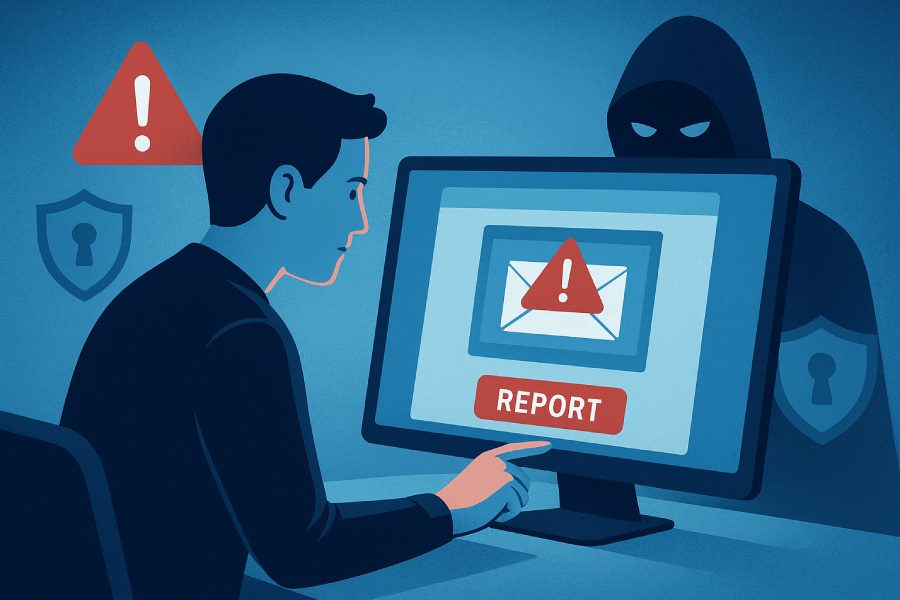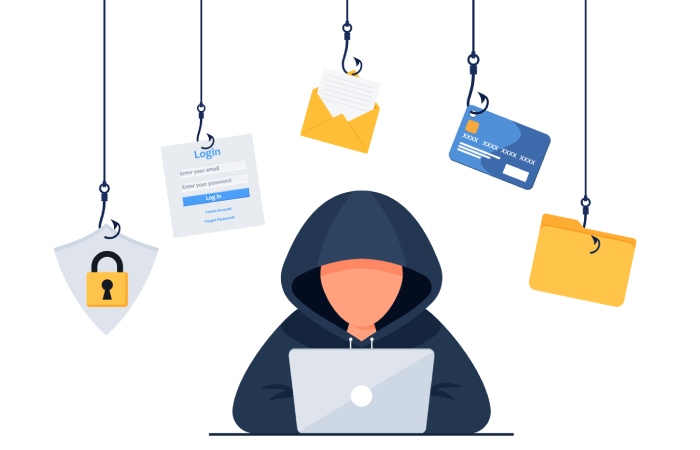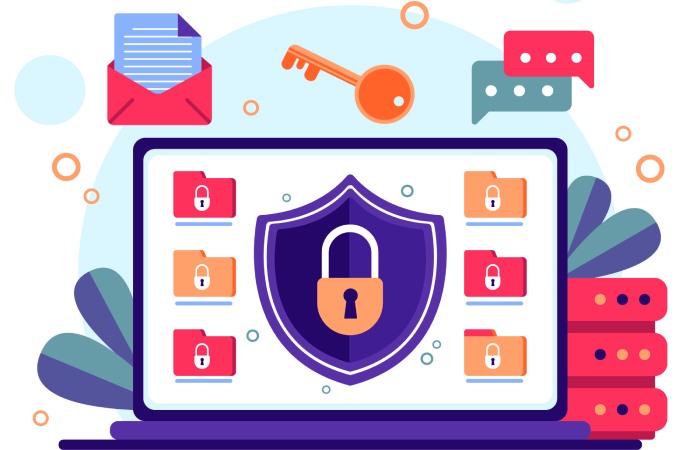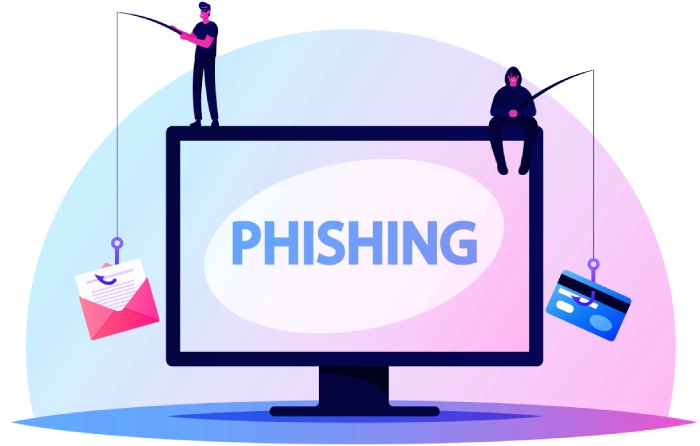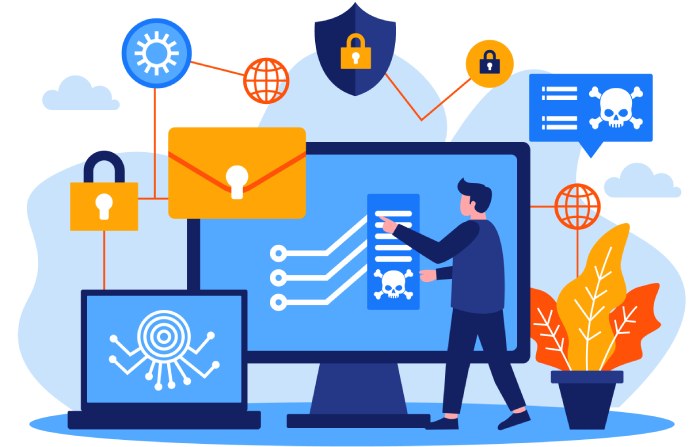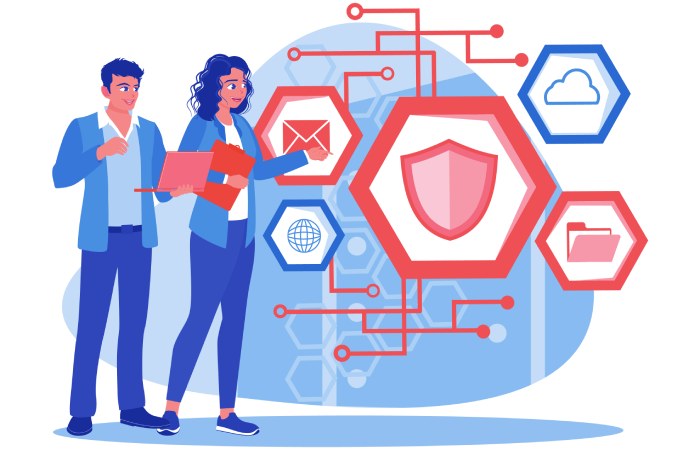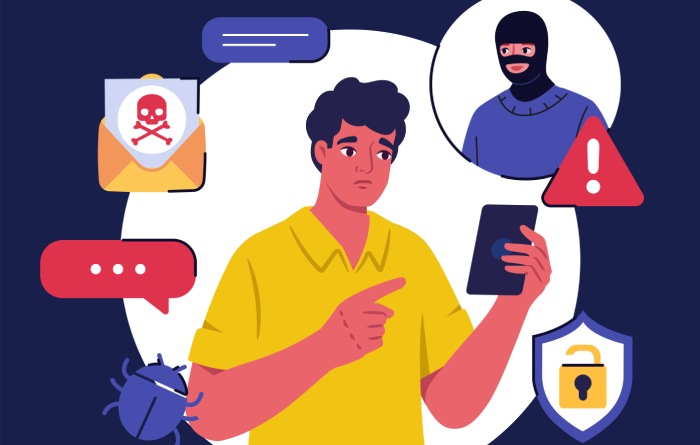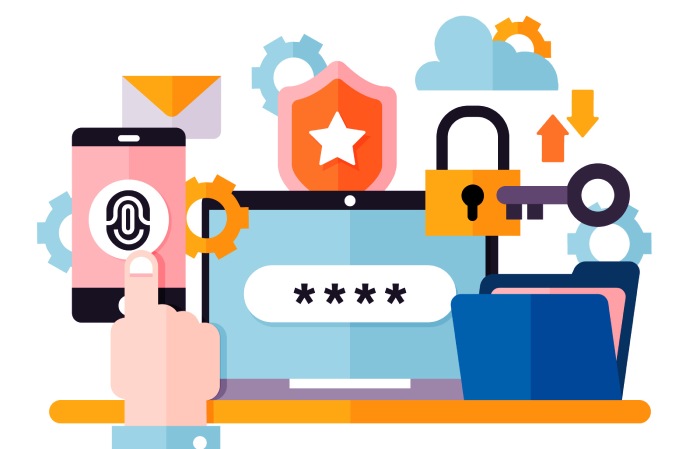Phishing attacks represent one of the most pervasive threats in modern cybersecurity, exploiting human psychology through social engineering to deceive individuals into divulging sensitive information. Cybercriminals orchestrate email fraud and online scams that often mask themselves behind trusted brands or well-known institutions. These fraudulent emails or messages employ spoofing techniques, phishing URLs, and domain phishing tactics to lure victims into clicking malicious links or downloading malware.
The primary objective of phishing is credential theft, which can lead to data breaches, identity theft, and financial loss. Attackers use a variety of sophisticated methods—from broad-based phishing schemes to highly targeted spear phishing and whaling attacks aimed at executives or high-profile targets. Understanding the mechanics behind these attacks is crucial for effective cyber attack mitigation and building robust security protocols.
Organizations such as PhishLabs, Proofpoint, and Cofense specialize in leveraging cyber threat intelligence to monitor phishing trends and develop advanced phishing detection and prevention technologies. Their insights contribute significantly to the development of anti-phishing tools and security policies that enhance email security across enterprises worldwide.
Common Types of Phishing Attacks to Watch Out For
Phishing scams appear in various forms, each tailored to exploit vulnerabilities at different levels:
- Spear Phishing: Customized attacks aimed at specific individuals or organizations. Spear phishing leverages personal information to craft convincing messages, increasing the odds of success in credential theft.
- Whaling Attacks: A subset of spear phishing targeting senior executives or key decision-makers. Often involving highly sophisticated domain phishing and spoofing tactics, whaling poses a significant risk to an organization’s information security.
- Clone Phishing: Attackers replicate legitimate emails but swap original links or attachments with malicious alternatives, often bypassing spam filters and phishing detection tools.
- Vishing and Smishing: Phishing variants conducted via voice calls (vishing) or SMS texts (smishing), exploiting human trust in direct communication channels.
- Malware-Embedded Phishing: Emails containing malicious attachments or links that, once clicked, deploy malware to compromise endpoint protection and network security.
Understanding these attack vectors enables IT teams and security professionals to implement targeted phishing protection techniques and invest in solutions like advanced spam filters, endpoint protection platforms (such as those from McAfee, Symantec, or Kaspersky Lab), and email authentication mechanisms.
Key Signs to Identify a Phishing Email or Message
Recognizing phishing emails is a fundamental skill in cyber hygiene and user education. Below are key indicators that often differentiate phishing attempts from legitimate communications:
- Suspicious Sender Addresses: Email addresses that mimic real domains using slight variations or domain phishing techniques. Email authentication protocols like Domain-based Message Authentication, Reporting, and Conformance (DMARC), Sender Policy Framework (SPF), and DomainKeys Identified Mail (DKIM) help validate sender legitimacy.
- Generic Greetings: Emails that use broad or impersonal salutations instead of personalized information, a hallmark of mass phishing campaigns.
- Urgent or Threatening Language: Messages that pressure recipients to act immediately, often threatening account suspension or legal action to invoke panic-driven responses.
- Unexpected Attachments or Links: Presence of unsolicited files or hyperlinks—phishing URLs often use URL obfuscation or redirect to spoofed domains.
- Spelling and Grammar Errors: Many phishing emails originate from non-native speakers or automated scripts, resulting in noticeable linguistic mistakes.
- Requests for Sensitive Information: Legitimate companies rarely ask for passwords, credit card details, or two-factor authentication codes via email.
Phishing awareness campaigns, such as those promoted by KnowBe4 and Mimecast, often emphasize these characteristics in their security awareness training modules to improve user vigilance.
How Cybercriminals Use Social Engineering to Trick Victims
Social engineering lies at the heart of phishing attacks, exploiting trust, curiosity, and fear. Cyber adversaries meticulously study their targets, using publicly available information and cyber threat intelligence to craft messages that resonate convincingly with their victims. Spear phishing and whaling attacks demonstrate the sophistication of social engineering—attackers may impersonate CEOs or trusted partners, creating a sense of authenticity.
Threat actors employ psychological tactics such as urgency, authority, scarcity, and reciprocity to manipulate decision-making processes. These manipulations can bypass even robust technical defenses unless supplemented by strong user education and phishing simulation exercises.
Security experts like Kevin Mitnick have long emphasized the human element as the weakest link in cybersecurity. Therefore, organizations invest in comprehensive security awareness training and phishing simulation programs (offered by vendors like Cofense and Proofpoint) to reinforce the importance of skepticism and cautious behavior among employees.
Best Practices for Protecting Your Personal and Financial Information
Protecting against phishing requires a layered approach encompassing both technology and personal habits. Implementing strong security protocols and maintaining rigorous cyber hygiene form the foundation of cyber attack mitigation.
- Use Multi-Factor Authentication (MFA): Employing two-factor authentication or multi-factor authentication adds an essential layer of defense against credential theft, even if passwords are compromised.
- Password Management: Utilize password managers to generate and store complex, unique passwords for every account, reducing the risk posed by phishing attempts.
- Keep Software Updated: Regular updates for operating systems, browsers, and endpoint protection software (such as Cisco’s or Palo Alto Networks solutions) patch vulnerabilities that phishing campaigns often exploit.
- Enable Email Authentication Protocols: Ensure your organization uses SPF, DKIM, and DMARC to authenticate emails, reducing domain spoofing and enabling effective phishing detection.
- Use Phishing Filters and Spam Filters: Advanced email security tools offered by providers like Barracuda Networks, Mimecast, and Trend Micro provide real-time filtering of phishing emails and suspicious content.
- Practice Secure Browsing: Tools like Google Safe Browsing and enhanced browser security settings help detect and block malicious phishing URLs before they inflict damage.
- Conduct Regular Security Awareness Training: User education is critical. Training programs and phishing simulations create awareness of evolving phishing tactics and reinforce safe online behavior.
- Adopt Zero Trust Security: Implementing zero trust principles ensures that no user or device is inherently trusted, limiting potential damage if phishing credentials are exposed.
- Incident Response and Digital Forensics: Establish clear incident response procedures to quickly investigate phishing-related breaches. Employ digital forensics to analyze attacks and strengthen defenses.
- Stay Informed Through Cyber Threat Intelligence: Keeping abreast of the latest phishing trends and emerging threats via platforms provided by FireEye, Darktrace, or RSA Security allows proactive adjustments in risk management and security policies.
Incorporating these phishing prevention techniques reduces the likelihood of falling victim to email fraud, protects sensitive financial and personal information, and strengthens organizational resilience against cyber threats documented by security researchers like Brian Krebs.
By combining technical defenses, vigilant cyber hygiene, and continuous user education, individuals and organizations can significantly mitigate the risks posed by phishing attacks and contribute to a safer digital environment.
The Role of Technology: Email Filters, Anti-Phishing Tools, and Software
In the multifaceted battle against phishing attacks, technology plays an indispensable role in cybersecurity. Email filters and anti-phishing tools form the primary line of defense against email fraud and domain phishing. Leading providers such as Proofpoint, Cofense, Mimecast, and Barracuda Networks offer robust solutions that integrate phishing detection algorithms, phishing filters, and spam filters to identify and quarantine suspicious emails before they reach end users. These technologies not only analyze known phishing URLs and patterns of spoofing but also leverage cyber threat intelligence to adapt to evolving tactics.
Email authentication protocols like Domain-based Message Authentication, Reporting, and Conformance (DMARC), Sender Policy Framework (SPF), and DomainKeys Identified Mail (DKIM) are widely implemented to verify sender legitimacy. This reduces the risk of spoofing and whaling attacks by preventing attackers from masquerading as trusted domains. Network security solutions from Cisco, Palo Alto Networks, and FireEye enhance protection by inspecting email traffic at the gateway, enforcing security policies, and employing zero-trust security models to minimize credential theft and malware infections.
Endpoint protection software from Symantec, Kaspersky Lab, and McAfee secures devices by detecting malicious payloads delivered via phishing scams. Integration of secure browsing tools and browser security features, such as those featured in Microsoft Defender and Google Safe Browsing, further protects users from clicking on dangerous phishing URLs. Together, these technologies support cyber attack mitigation efforts through layered defense and real-time threat analysis.
Steps to Take if You Suspect a Phishing Attempt
Recognizing a potential phishing attempt is the first step in effective cyber attack mitigation. Users should avoid clicking on hyperlinks or downloading attachments from unsolicited or suspicious emails, especially those requesting sensitive information. Immediately reporting suspected phishing emails to IT security teams or using reporting tools provided by services like KnowBe4 and PhishLabs allows for quick incident response and containment.
Strengthening account security through two-factor authentication (2FA) or multi-factor authentication (MFA) is critical if users fear their credentials may have been compromised. Resetting passwords and reviewing recent account activity can prevent identity theft and limit data breaches. Conducting a digital forensics investigation to analyze logs and traces helps understand the scope and origin of the attack. Simultaneously, updating software and security protocols ensures vulnerabilities exploited in the phishing attack are patched to maintain cyber hygiene.
Real-Life Examples of Phishing Scams and How They Were Avoided
Industry experts such as Brian Krebs and Kevin Mitnick have documented numerous phishing scams illustrating the sophistication of social engineering tactics used by cybercriminals. One high-profile case involved spear phishing emails targeting executives with forged invoices, resulting in significant financial loss. However, organizations that employed phishing simulation exercises and security awareness training with entities like KnowBe4 were able to detect and thwart similar attacks through vigilant user education.
Another example includes whaling attacks where attackers impersonated top-level managers to authorize fraudulent wire transfers. Implementation of phishing prevention techniques like multi-factor authentication and stringent email authentication protocols across companies such as Microsoft and Cisco mitigated risks effectively. The use of anti-phishing tools combined with vigilant employee adherence to security policies proved decisive in preventing data breaches and reputational damage.
Educating Yourself and Others: Building Awareness Against Phishing
User education is a cornerstone of effective cybersecurity and phishing defense. Security awareness training programs offered by organizations like Cofense and PhishLabs emphasize recognizing social engineering methods, understanding phishing indicators, and practicing secure behaviors like password management and secure browsing. Regular phishing awareness campaigns reinforce these lessons, ensuring that employees remain cautious and informed.
Phishing simulation exercises help reinforce real-world learning by exposing users to replicated phishing scenarios, thereby elevating their readiness to identify phishing URLs, spoofed emails, and suspicious attachments. Coupled with improvements in cyber hygiene and adherence to security protocols, such education fosters a security-conscious culture vital to organizational risk management.
Staying Updated: How to Keep Up with Emerging Phishing Tactics
Phishers continuously evolve tactics, using innovative social engineering methods and advancing malware deployment. Staying ahead requires active engagement with cyber threat intelligence feeds from providers such as Darktrace, RSA Security, and FireEye. Subscribing to cybersecurity bulletins and threat alerts helps individuals and organizations keep their defenses current.
Adopting a proactive approach to information security means regularly updating endpoint protection, email security infrastructure, and browser security settings. Collaboration with threat intelligence sharing platforms enhances the detection of emerging phishing URLs and domain phishing schemes. Regular revisions of security policies, combined with continuous user education and phishing simulation, ensure an adaptive defense posture against the ever-changing landscape of online scams.
FAQs
What is the difference between spear phishing and whaling attacks?
Spear phishing targets specific individuals or groups with personalized emails, whereas whaling attacks focus on high-profile executives or decision-makers to maximize impact, often involving financial fraud or sensitive data theft.
How do DMARC, SPF, and DKIM help prevent phishing?
These email authentication protocols validate the legitimacy of sending domains, reducing spoofing and domain phishing by enabling recipients’ email servers to reject unauthorized or forged messages.
Why is multi-factor authentication important in phishing prevention?
Multi-factor authentication adds an extra verification step beyond passwords, significantly reducing the risk of credential theft and unauthorized account access even if login details are compromised.
How can phishing simulation aid in cybersecurity?
Phishing simulations provide practical user education by exposing employees to controlled phishing scenarios, increasing their ability to recognize real phishing emails, and thereby enhancing organizational cyber hygiene.
What steps should I take if I click on a phishing email link?
Immediately disconnect from the internet, change your passwords using a secure device, notify your IT security team, and conduct malware scans. Monitoring accounts for suspicious activity is also crucial to mitigate potential damage.
Key Takeaways
- Robust email filters, anti-phishing tools, and email authentication protocols like DMARC, SPF, and DKIM are essential for defending against phishing attacks.
- Prompt incident response, including reporting and implementing multi-factor authentication, mitigates risks associated with suspected phishing attempts.
- Real-world phishing scams demonstrate the effectiveness of security awareness training and phishing simulations in preventing breaches.
- Continuous user education and phishing awareness campaigns foster a security-conscious culture critical for cyber attack mitigation.
- Staying updated through cyber threat intelligence and regularly enhancing security protocols ensures resilience against evolving phishing tactics.

